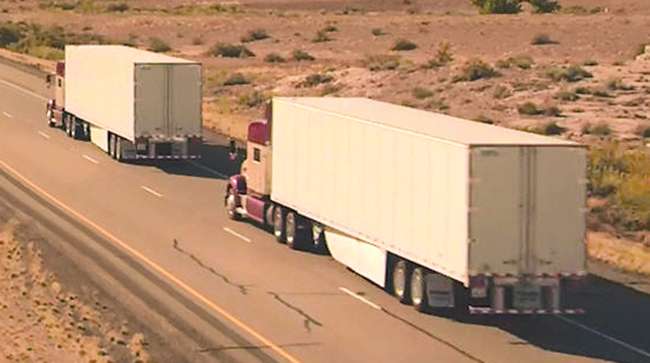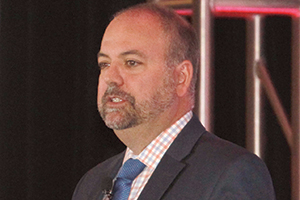Staff Reporter
ATA’s Chris Spear Urges Fleets to Plan for Future When Developing Workforce

NASHVILLE, Tenn.— Trucking companies need to “look beyond the hood” when cultivating a workforce, monitoring on the road ahead for issues that will shape their businesses in years to come, American Trucking Associations President Chris Spear said here.
Speaking Feb. 22 at the 2018 Recruitment and Retention Conference, Spear acknowledged that the trucking industry faces many of the issues that other sectors grapple with, such as infrastructure and cybersecurity. However, he said attracting and maintaining a strong workforce probably is the industry’s most harrowing challenge. One solution is for carriers to develop recruitment plans that consider issues that will be pertinent in 10-15 years, Spear said.
“I would argue that workforce development is, and will continue to be, our industry’s biggest impediment to long-term growth,” he said. “Clearly, doing nothing is not sustainable. We need to stop talking about this issue, and we need to start solving this issue. These issues are lasting. This is about seed-planting.”
"Bring your ideas to us"--@TRUCKINGdotORG President Chris Spear on workforce development @ConversionIA's retention conference pic.twitter.com/zAHWZSIIY7
— Eleanor Lamb (@eleanorannlamb) February 22, 2018
Spear said one in 16 jobs in the United States belongs to a truck driver. But despite the important role that truck operators play in the workforce, the industry faces a nationwide shortage of them.
ATA last year reported the shortage at more than 50,000 drivers. The shortage also has regained its status as the trucking industry’s most pressing concern for the first time since 2006, the American Transportation Research Institute reported this year.
Spear urged carriers to appeal to a younger audience when recruiting, citing the 4.9 million people in the United States aged 16-24.
More R&R Coverage
Federal law does not permit 18- to 21-year-olds to drive Class 8 trucks across state lines, a regulation that Spear called “one of the dumbest federal policies I have ever come across.” Some 48 states allow people in this demographic, which includes students who have just graduated from high school, to drive Class 8 trucks within state lines.
Spear called for regulations that would lower the age limit for those who can possess a CDL but which also would establish controls so that younger drivers aren’t tasked with longer, coast-to-coast trips that might be better-suited to more experienced drivers.
“We need to make trucking cool again,” Spear said. “We need to be able to take technologies and understand what attracts youth and draws them into the industry.” He added that freight companies should engage in the ongoing conversation about autonomous technology.

Autonomous technology doesn't mean driverless vehicles, Costello said. (John Sommers II for Transport Topics)
ATA Chief Economist Bob Costello stressed during a presentation that autonomous technology does not mean driverless vehicles but rather devices that can assist the driver. Costello said drivers approach him fearing their jobs will be gone in five years, but he assures them that this likely is not the case.
Rather, as Spear noted, autonomous technology can help reduce wastefulness through practices such as platooning.
“Let’s be realistic. We are not going to driverless tomorrow,” Spear said. “If we’re willing to embrace technologies and the role they can play in our environment, it could supplement certain concepts. The infusion of technology could be a catalyst to growth.”
The Recruitment & Retention conference was co-hosted by Conversion Interactive Agency, American Trucking Associations and Transport Topics.




